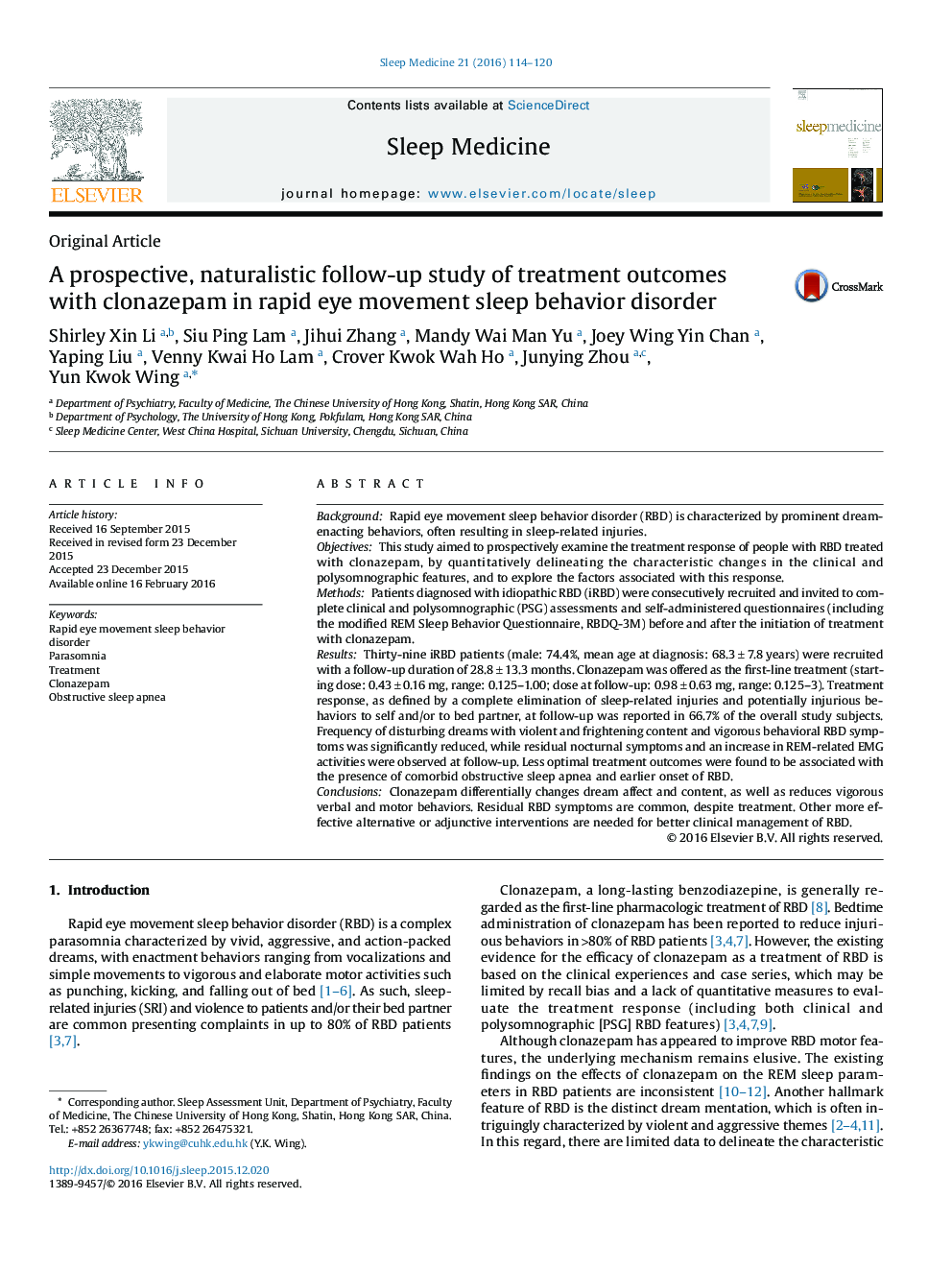| کد مقاله | کد نشریه | سال انتشار | مقاله انگلیسی | نسخه تمام متن |
|---|---|---|---|---|
| 6060223 | 1586487 | 2016 | 7 صفحه PDF | دانلود رایگان |
.
- Clonazepam reduced vigorous verbal and motor behaviors, with two thirds of patients free from sleep-related injuries.
- Residual rapid eye movement sleep behavior disorder (RBD) symptoms, however, were common, despite treatment.
- Clonazepam changed dream affect and content while reducing motor activities.
- Less optimal treatment response was associated with younger age and comorbid obstructive sleep apnea.
- RBDQ-3M, a self-administered modified RBDQ scale, could be a sensitive and valid tool to monitor the treatment progress.
BackgroundRapid eye movement sleep behavior disorder (RBD) is characterized by prominent dream-enacting behaviors, often resulting in sleep-related injuries.ObjectivesThis study aimed to prospectively examine the treatment response of people with RBD treated with clonazepam, by quantitatively delineating the characteristic changes in the clinical and polysomnographic features, and to explore the factors associated with this response.MethodsPatients diagnosed with idiopathic RBD (iRBD) were consecutively recruited and invited to complete clinical and polysomnographic (PSG) assessments and self-administered questionnaires (including the modified REM Sleep Behavior Questionnaire, RBDQ-3M) before and after the initiation of treatment with clonazepam.ResultsThirty-nine iRBD patients (male: 74.4%, mean age at diagnosis: 68.3â±â7.8 years) were recruited with a follow-up duration of 28.8â±â13.3 months. Clonazepam was offered as the first-line treatment (starting dose: 0.43â±â0.16âmg, range: 0.125-1.00; dose at follow-up: 0.98â±â0.63âmg, range: 0.125-3). Treatment response, as defined by a complete elimination of sleep-related injuries and potentially injurious behaviors to self and/or to bed partner, at follow-up was reported in 66.7% of the overall study subjects. Frequency of disturbing dreams with violent and frightening content and vigorous behavioral RBD symptoms was significantly reduced, while residual nocturnal symptoms and an increase in REM-related EMG activities were observed at follow-up. Less optimal treatment outcomes were found to be associated with the presence of comorbid obstructive sleep apnea and earlier onset of RBD.ConclusionsClonazepam differentially changes dream affect and content, as well as reduces vigorous verbal and motor behaviors. Residual RBD symptoms are common, despite treatment. Other more effective alternative or adjunctive interventions are needed for better clinical management of RBD.
Journal: Sleep Medicine - Volume 21, May 2016, Pages 114-120
